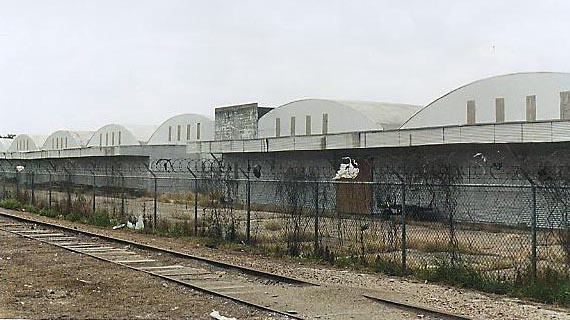I have two Grain elevators that I build for my Alabama layout now I would like to use them for my SW New Mexico layout . The crop the grow along the Rio Grande are cotton , corn , Chile , onions , Alfalfa and pecans . I 'm no farmer so can any of these be put in a Grain elevators or do I try pitch them and build something to store it until they can be ship ? I model 2000 -2010 in SW NM . Thanks in advance
Check out the Bruce Selyem site at http://www.grainelevatorphotos.com/photogallery.html and look for elevators in or near where you want to model. There are also some western US elevator photos here http://www.pbase.com/sanoyes/elevator_west. Sometimes a region will surprise you with what industrial structure will be located where, and a typical structure for the region may look at home on your layout even if its prototype is from some distance away.
Do we have any farmers in the southwest U.S. who can help us here?
Rich
For corn, yes the elevators and silos are how they are stored.
For cotton, it is usually stored in big bales. First just sitting around the field until hauled to the cotton gin and then to market or the storage at the farm. As I recall, other than the obvious bales of cotton sitting around the fields, all the cotton ginning and storage facilities were just basically big metal sheds or pole barns.
Pretty much the same for alfalfa as cotton. Metal pole barns.
Sorry don’t know about the others.
I have no idea on onions, chiles, or pecan storage. In Iowa alfafa if stored inside at all it is typically stored in pole sheds, some with just roofs and no walls. Many just pile the bales on one end of the field close to the road. If the farmer usually sells his product to others they like big square bales usually in lenghts/widths appropriate (48 in wide is common) to use up all the space on 96 in wide flatbed semi trailers. 5-6ft high round bales are used but are not as space efficient. Many southwest farmers grow irrigated alfalfa for race horses. The hay doesn’t get rained on and loose nutritional value in a desert.
Cotton generates 4 products:
-
Bales of cotton - loaded in boxcars
-
Cotton seed meal - loaded in covered hoppers and used for animal feed.
-
Cotton seed hulls - loaded in boxcars and used as ground cover and animal feed supplements.
-
Cotton seed oil - loadied in tank cars
Thanks
Don’t mistake the term “elevators” for “terminals” elevators are usually smaller and more frequent and much of the grain is shipped to terminals, check out the elevators in North and South Dakota and Montana to see the type of grain elevators in use on the prairies.
Cotton depends on era. Before about 1950-something, when the mechnical cotton picker was perfected, it was usually picked by hand, the bolls put in big burlap or jute bags. Carried to the gin in wagons with chicken wire to hold the fluffy stuff.
The gin MAY have a storage facility connected but it is mainly a place for 2 mechanical processes. Ginning-n that is removing the seeds, and compressing into bales. The “gin bale” is bulkier and less dense than the “compress bale.” Bales often more to a seaport compress where are pressed into tighter bales…to get more into a ship’s hold.
This was the front of an old cotton warehouse connected to a compress in Galveston, 1995 photo.
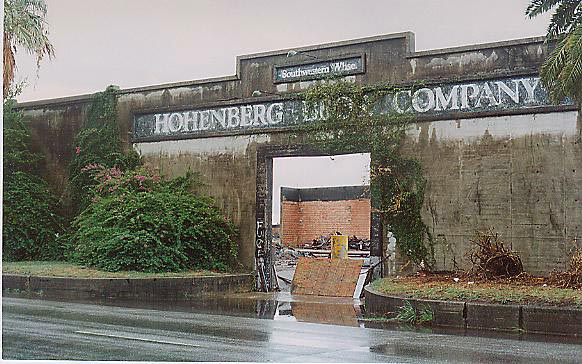
There was a four block stretch of these fronts, growing with bougainvillaea vine, on a boulevard lines with palm trees and oleanders. I called it the “garden warehouse district.” This is a schematic map of the district.
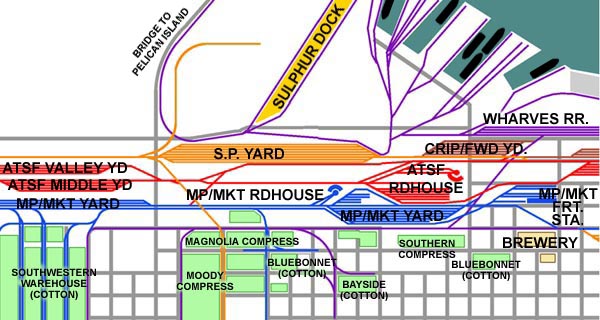
Since about 1970, cotton has been handled in the field in cotton MODULES. A cotton picking machine will dump its load into a “module builder” which compresses the cotton a little to make a mass which stays together when the module builder in removed. Then the modules can be carried to a gin for processing.
Here is a row of seaport cotton concentration sheds I have drawn with bales in photoshop as a background for my Island Seaport layout.
Cotton warehouse sheds often have firewalls that come above the ends of the building to stop a fire from spreading.
Thanks leightant that help a lot .
Thanks that helps a lot .
AGRICULTURAL RELATED INDUSTRIES- notes and references
COTTON
Compress, Belen NewMex pix RailModJournal Apr93 p.10
Compress, , Aransas Compress
blt 1928, 12’ high concrete walls, 4’ raised clerestories,
Cotton oil mill buildings at Harlingen, Texas, 2008 I believe.
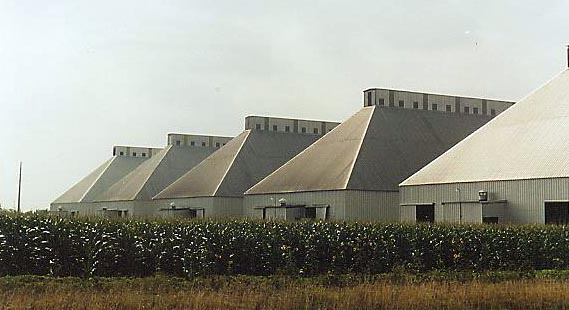
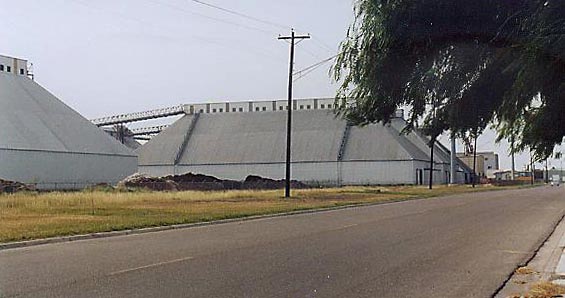
Concrete buildings as part of cotton compress at Corpus Christi, Texas
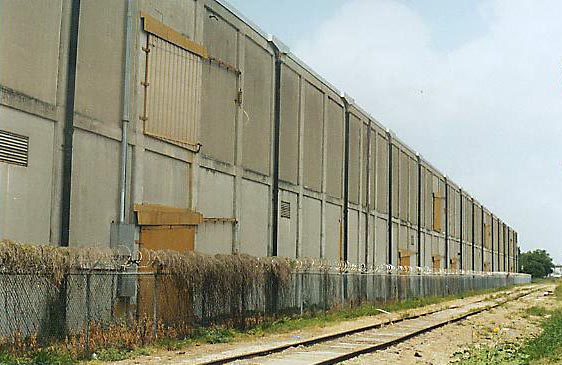
Same compress, quonset-hut type buildings.
